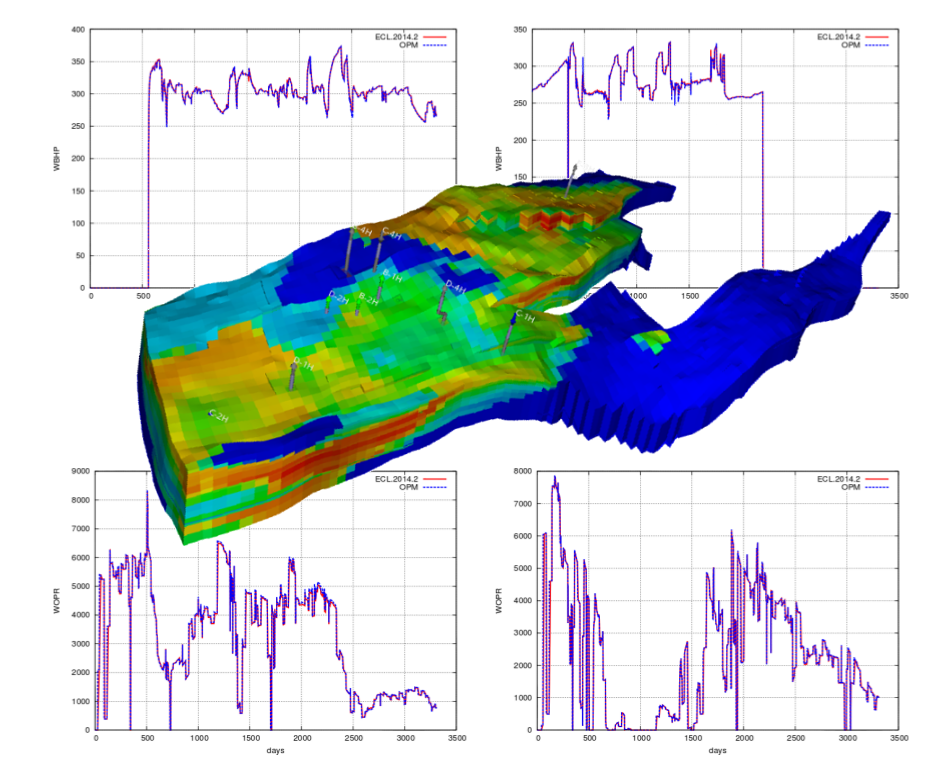OPM Flow is a fully-implicit, black-oil simulator capable of running industry-standard simulation models. The simulator is implemented using automatic differentiation to enable rapid development of new fluid models.

Documentation:
See the page for the OPM Flow manual.
Model formulation:
- black-oil with dissolved gas and vaporized oil
- rock-dependent capillary and relative-permeability curves
- end-point scaling and hysteresis
- oil vaporization controls (VAPPARS)
Options and variants:
- easy-to-use CO2STORE option for carbon sequestration in aquifers
- thermal simulation, temperature dependent properties and heat flow
- extended black-oil model with gas/water mixing
- Todd-Longstaff type polymer model with adsorption, dead-pore space, permeability reduction, and shear effects (Flow-polymer)
- extra component equation(s), such as a solvent model (Flow-solvent)
Description of geology:
- rectilinear and fully-unstructured grid
- corner-point grids from Eclipse input, including fault and region multipliers, minpv/pinch, etc
Wells and facilities:
- bottom-hole pressure, tubing head pressure and surface/reservoir rate constraints
- group controls
- shut/stop/open individual completions
- history-matching and prediction well controls
- network model for pipe networks
Input/output:
- general reader/parser for Eclipse input decks
- XML-based or simple text-format input of additional parameters
- flexible output of summary and restart files in Eclipse format
- logging to terminal and print file
Simulation technology:
- fully-implicit in time
- two-point flux approximation in space with upstream-mobility weighting
- flexible assembly through the use of automatic differentiation
- Newton and NLDD non-linear solvers
- block-structured linear solver with ILU0 preconditioner
- CPR preconditioner and multigrid solver
- adaptive step-size controls